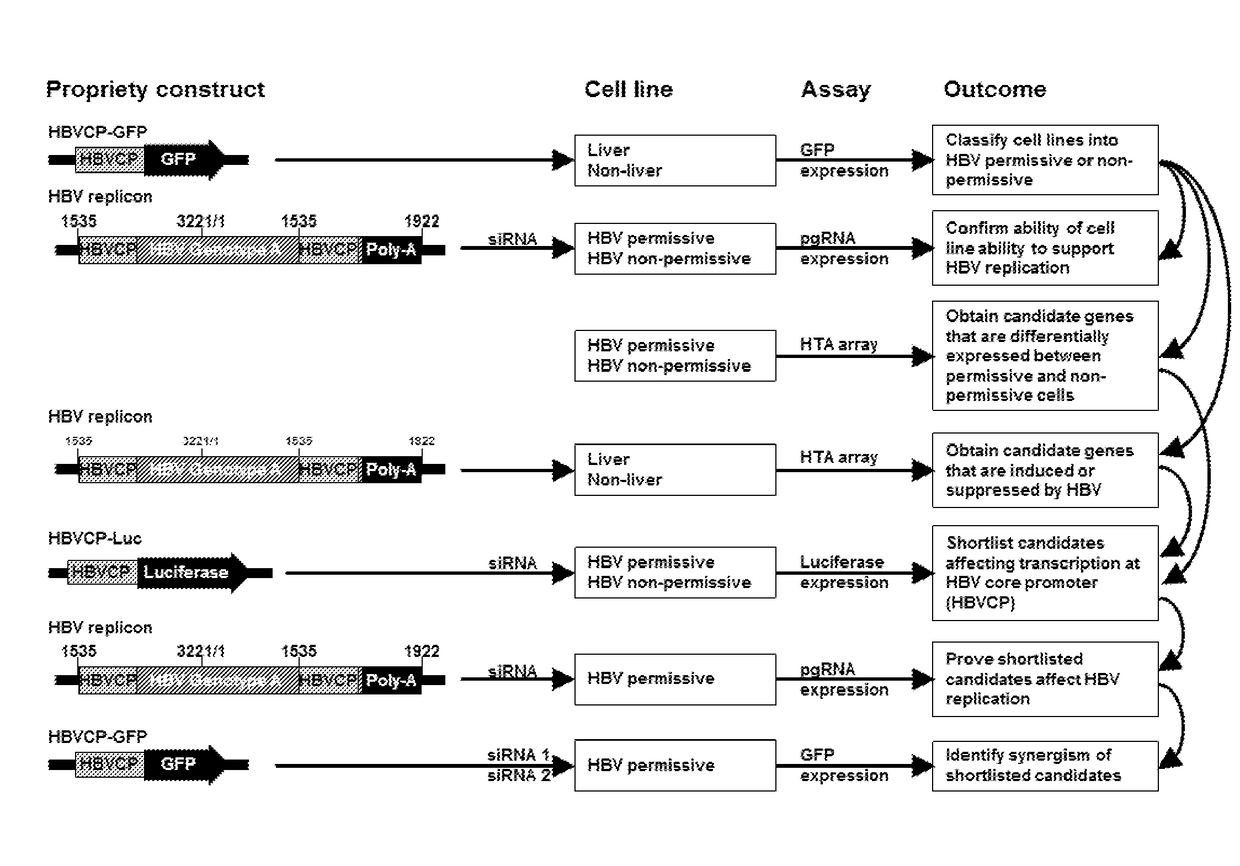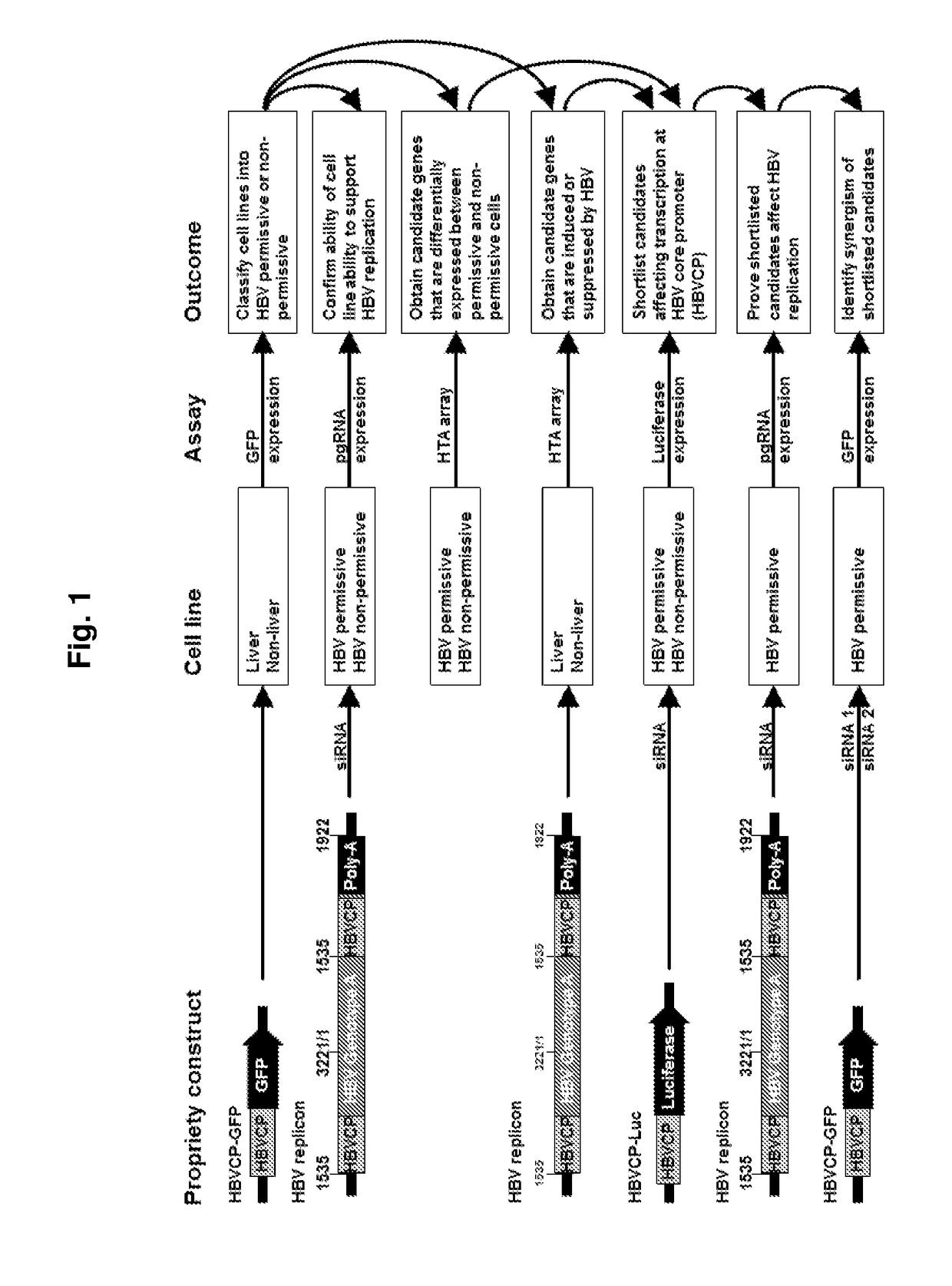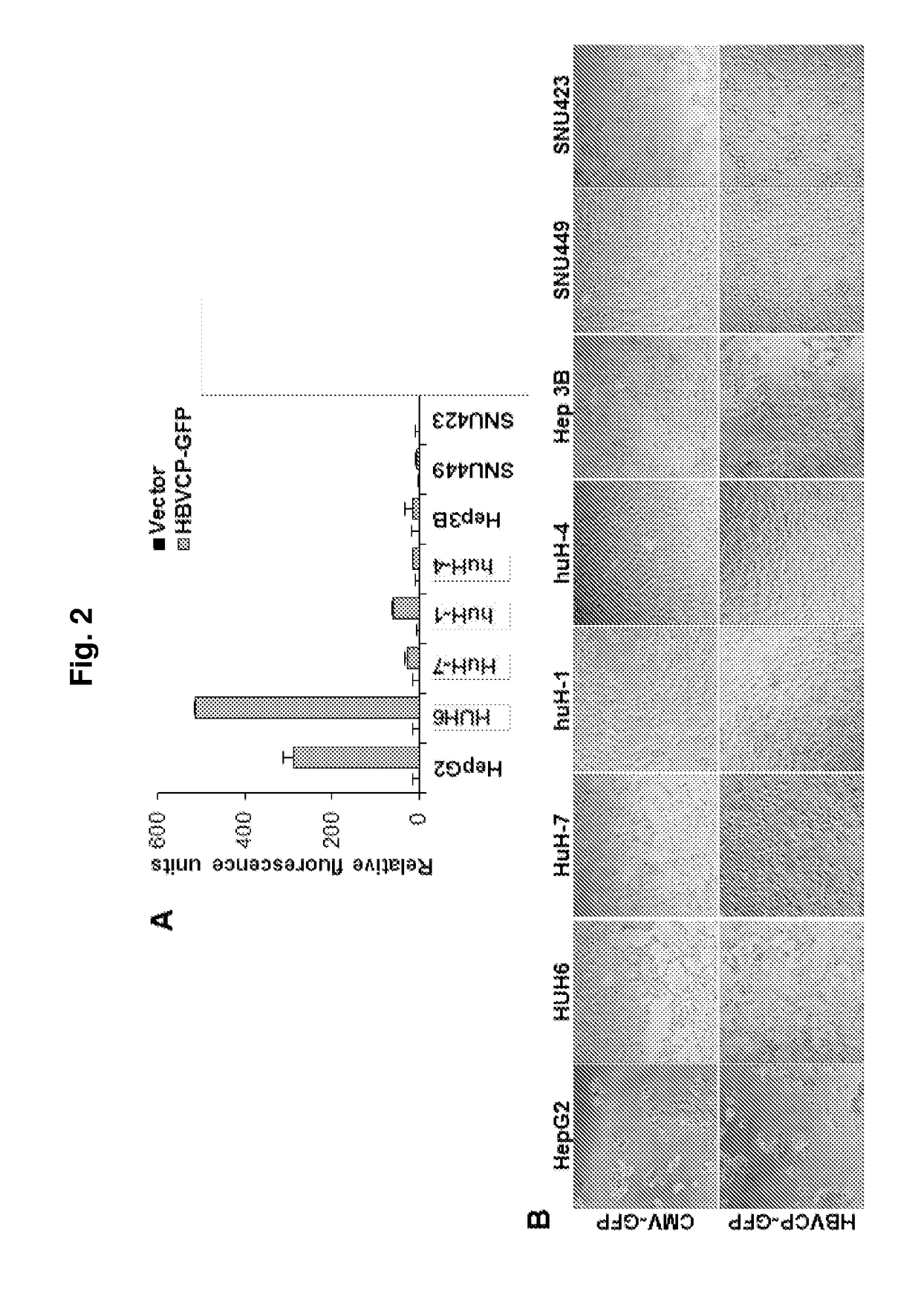Modulation of hepatitis b virus replication
- Summary
- Abstract
- Description
- Claims
- Application Information
AI Technical Summary
Benefits of technology
Problems solved by technology
Method used
Image
Examples
example 1
[0149]Using a panel of liver and non-liver cell lines, a number of host factors were identified to influence the efficiency of HBV replication.
[0150]Through the use of siRNAs to knock down the genes associated with the factors, it was shown that transcriptional activity controlled by a HBV core promoter, as well as the replication of the entire HBV genome, may be modulated. The siRNAs applied for each gene target were in an equimolar mixture for down-regulating the gene (gene ID). This supporting the theory these genes may function as targets to develop interventions that can be used to modulate and control HBV replication.
[0151]Development of a HBV Transcription Screen
[0152]A HBV core promoter (HBVCP)-green fluorescence protein (GFP) construct was developed for use in transfecting different human cell lines. Subsequently, cell lines that possess host factors that bind to the HBVCP will lead to transcription as evidenced by the increased expression of GFP. Using this screening metho...
example 2
[0167]Development of a HBV Transcription Screen
[0168]To identify tissue restrictive host transcription factors, as in Example 1 described herein, a GFP reporter construct driven by HBVCP was transfected into a panel of liver and non-liver cell lines (n=14, FIG. 6a). Surprisingly, besides liver cell lines, colon (Caco-2), stomach (Kato III, AGS) and lung (A549) cells were also GFP-positive. Other non-liver cells derived from bladder, prostate, bone, ovary and skin had negligible GFP expression. All non-liver cells lack albumin and transferrin (FIG. 10a), and were GFP-positive with the CMV-GFP control (FIG. 10b). A whole-virus replicon (FIG. 10c) transcribed pgRNA (FIG. 6b) and generated HBcAg (FIG. 10d) in permissive liver and non-liver cells, indicating that the host cellular milieu supporting HBV replication are similarly present in liver and selected non-liver cells.
[0169]Screening for Host Factors
[0170]Transcriptomic profiles for all 14 cell lines (Affymetrix HTA 2.0, (FIG. 11a) ...
example 3
[0172]SNAI2 (Snail)
[0173]SNAI2 codes for Slug, a member of snail protein family of zinc finger transcription factors. Its homologs SNAI1 (Snail) and SNAI3 (Smuc / ZNF293) showed no correlation with HBV permissiveness (FIG. 13a). Slug expression was high in non-permissive cells while low / absent in permissive cells; and this pattern was similarly exhibited in corresponding primary human tissues (FIG. 6e).
[0174]Slug binds to the E-box recognition motif which overlaps the pgRNA initiator within the basal core promoter (BCP) of HBVCP (FIG. 6d), indicating that Slug binding may interfere with pgRNA initiation. Its HBVCP repressive role was verified when HBVCP activity was shown to increase by deleting the 6 bp motif (FIG. 13b) or mutating its cognate binding motif from “CAACTT” to “TTACGT” which was also confirmed by loss of EMSA binding (FIG. 6f, FIG. 13c). Motif deletion rendered the HBVCP insensitive to the effects of Slug overexpression (FIG. 13d), which at the wild-type HBVCP resulted ...
PUM
| Property | Measurement | Unit |
|---|---|---|
| Fraction | aaaaa | aaaaa |
| Fraction | aaaaa | aaaaa |
| Fraction | aaaaa | aaaaa |
Abstract
Description
Claims
Application Information
 Login to View More
Login to View More - R&D
- Intellectual Property
- Life Sciences
- Materials
- Tech Scout
- Unparalleled Data Quality
- Higher Quality Content
- 60% Fewer Hallucinations
Browse by: Latest US Patents, China's latest patents, Technical Efficacy Thesaurus, Application Domain, Technology Topic, Popular Technical Reports.
© 2025 PatSnap. All rights reserved.Legal|Privacy policy|Modern Slavery Act Transparency Statement|Sitemap|About US| Contact US: help@patsnap.com



